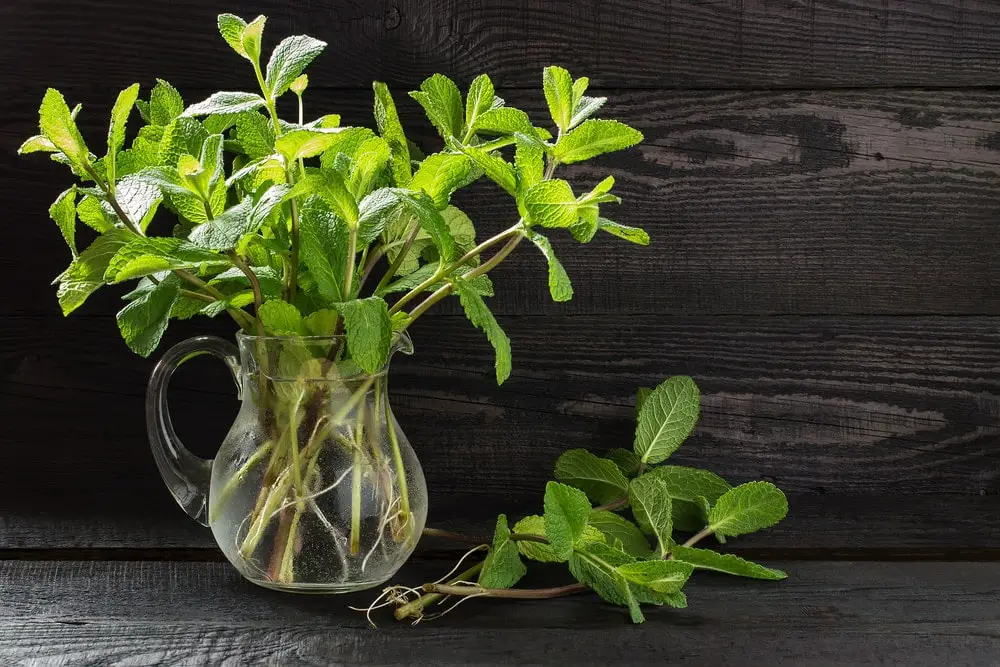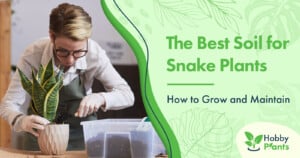When people think of growing plants, they think of growing them in soil, not water.
There are several plants that you can grow this way. It does not matter if you have a green thumb or not. Read on to learn how to grow houseplants in water.
Growing Houseplants in Water
This method of growing plants is known as hydroponic harvesting. It is a way of growing your plants organically. When growing houseplants in the water they use a mixture of water and nutrients.
What do you Need to Grow Houseplants in Water
The first thing you will need is a plant that does not need to be fed. It also needs to be almost impossible to kill. You will need to make sure that your plant is getting the nutrients it needs from the water. The container that you will need to use has to be able to keep the plant from tipping over. You can check online or at your local nursery for specific root vases made for herbs and waterborne plant life. Most plants use the soil to keep them from tipping over and for nutrients. Some houseplants and small herbs can get sufficient nutrients from the water. Water does contain some trace amounts of nutrients and minerals that help plants develop.

How to Grow Plants in Water
1. Pick your plant
The first step is to pick your plant. The ones that are best for this are the ones that grow fast. Some of the herbs that can be grown this way include mint, oregano, basil, sage, rosemary, and lavender. You can also raise the Wandering Jew or Ivy plants. One flowering plant that will survive being grown in water is the Begonia.
2. Root it
Clip a segment of the plant you are going to grow in water and put it in a glass jar or container you are using. When cutting the plant, make sure that you do it below the leaf so you leave the stem in place. The stem is considered the leaf node. This is where most of the rooting hormone inside the plant has already been active. This will ensure a sprout. You can get cuttings from friends and families if you do not have any plants to get cutting from.
3. Water it
The water that you use to grow your plant is important. It is advised not to use city water. The reason is that it is filtered to make it drinkable and it could also have chemicals in the water that are harmful to the plant. Most of this water is also chlorinated. It will usually have no nutrients either. You should buy spring water from the store to use. You can use any glass jar you have as long as you are able to see through it. Red glass, according to research done, will help the plants to grow quicker. All that matters that whatever container you choose, the roots have to obtain light.
You will need to refill the water when about 50% of the water evaporates. There is no concern about stagnant water. When you grow plants in the water, the plants are alive so the water will remain clear.
4. Check every 12 months
Yes, this sounds like a long time but about this time the roots will have grown a lot. The water will usually start to look murky so it will need to be changed. The roots will also probably need to be trimmed so the roots do not choke the plant.
Plants you can Grow in Water
African Violet
Growing this plant in water is a good way to get a clone of the parent plant. One thing to note is that when some multicolor violets are grown in the water they will give you plants with solid colors instead. To start a new plant, you need young healthy leaves. Cut your leaf about two inches from the stem. Put the leaf in a bottle with a narrow neck that will keep the leaf dry and suspended. It will take about a month for you to see roots forming. Over time a tiny plant will form with its own crown.
More like this: 5 Signs you are Overwatering Your Plants
Begonia
When you harvest the stems to grow in water, the succulent thick stems are very forgiving. You should use hardy wax begonias that have very knobby leaf nodes. These will easily form roots. You can even grow the tuberous and fancy rex begonias in water. All you need to start a new plant is a whole leaf. It can take a couple of months before you see the roots form. To prevent bacteria from forming you should do weekly water changes. If not, the bacteria can lead to rot.
Baby’s Tears
This plant produces a myriad of tiny leaves on a creeping plant. This plant will form a dense but a delicate trailing mat. All you have to do is pinch off a cluster of stems that do or do not have roots and put them in water. This plant really adapts growing in water. Because the plant grows so many leaves along the stems, the leaves that are continually submerged may start to rot. To remove any leaves that are floating in the water you should change it once a week. Let the water level drop once the roots are delivering moisture to the plant and the roots are well-formed.
Conclusion
Growing plants in water have never been easier. Many people are trying to grow plants in water because it is simple and not that expensive. There are many other plants you can grow in water like the Philodendron, Lucky Bamboo, and so many more. Many houseplants have been genetically programmed to form roots from pieces of the plants when they are exposed to moisture. One advantage of growing plants in the water you can multiply or start your houseplant collection at little to no expense. It is a thrill to watch a piece of a plant slowly grow roots and become another plant.
Also read:
- How to Grow And Care For A Magnolia Tree From A Seedling
- How to Make Sure Your Houseplants are Thriving
- 11 Benefits of Having Houseplants in Your Home
Victoria is the owner and main author of hobby plants. She loves spending her free time in her garden planting and taking care of her plants. Victoria hopes you enjoy the content here!

![The Best Stylish Grow Lights for Indoor Plants [REVIEWED] The Best Stylish Grow Lights for Indoor Plants [REVIEWED]](https://www.hobbyplants.com/wp-content/uploads/2022/07/stylish-grow-lights-for-indoor-plants-300x158.jpg)
![How Often to Water Fiddle Leaf Fig? [COMPLETE GUIDE] How Often to Water Fiddle Leaf Fig? [COMPLETE GUIDE]](https://www.hobbyplants.com/wp-content/uploads/2022/06/how-often-to-water-fiddle-leaf-fig-300x158.jpg)
![How To Bottom Water Plants [MOST EFFECTIVE TECHNIQUES] How To Bottom Water Plants [MOST EFFECTIVE TECHNIQUES]](https://www.hobbyplants.com/wp-content/uploads/2022/07/how-to-bottom-water-plants-300x158.jpg)
![How Often Should You Water Pothos? [Complete Care Guide] How Often Should You Water Pothos? [Complete Care Guide]](https://www.hobbyplants.com/wp-content/uploads/2022/07/how-often-to-water-pothos-300x158.jpg)
![How Often Do You Water A Snake Plant? [FIND OUT HERE] How Often Do You Water A Snake Plant? [FIND OUT HERE]](https://www.hobbyplants.com/wp-content/uploads/2022/07/how-often-do-you-water-a-snake-plant-1-300x158.jpg)
![How Often Should You Water Ferns? [COMPLETE CARE GUIDE] How Often Should You Water Ferns? [COMPLETE CARE GUIDE]](https://www.hobbyplants.com/wp-content/uploads/2022/08/how-often-to-water-ferns-300x158.jpg)